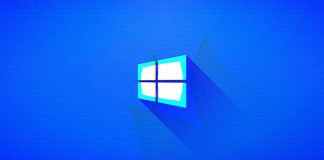On the Windows 7 system, is the CPU used 100% in situations where this shouldn’t happen? Responsible maybe some updates recently released by Microsoft in preparation for the release of Windows 10.
Three official updates, distributed by the Redmond giant in recent weeks, allow you to activate some features on Windows 7 and Windows 8.1 systems that should facilitate a possible upgrade to Windows 10, also in consideration of the free operation.
The updates in question are recognizable by the presence of the identifiers KB2952664, KB2990214, and KB3035583.
The first is presented as an update to facilitate the upgrade procedure to Windows 10, as soon as the operating system is released in its final form; the second provides to add some accessory features to Windows Update so that it is ready to receive the Windows 10 installation files; the third, finally, should lead to the display of a series of messages that support the installation of Windows 10.
Windows 7, Windows 8.1 and 100% CPU
Suppose for a certain period, even when the system in use is not engaged in other activities, the CPU appears very busy. In that case, the behavior is likely due to the installation of the updates mentioned above.
Among the processes running in Windows ( CTRL + SHIFT + ESC to access the Task Manager, Processes tab ), you may find an instance of rundll32.exe, which takes up significantly the CPU. By clicking on the View menu, Select Columns, then ticking the Command Line box, you should read C: WINDOWSSYSTEM32 undll32.exe appraiser.dll, DoScheduledTelemetryRun .
The updates above appear to activate what Microsoft calls “telemetry”, a collection of data on the user’s system that will be used to improve the process of deploying and installing Windows 10 on Windows 7 and Windows 8.1 machines.
Microsoft telemetry appears to be enabled regardless of user choices. It does not seem to matter, that is, whether or not the user has chosen to participate in the so-called Customer Experience Improvement Program.
How to solve the problem
To bring CPU usage down again, you can turn off Microsoft telemetry.
To proceed, simply start the Task Scheduler, click Task Scheduler Library, Microsoft, Windows. Within Application Experience, all AitAgent, Microsoft Compatibility Appraiser, and ProgramDataUpdater entries can be disabled.
However, it should be noted that installing new updates may cause the three items to be reactivated.

A tech-savvy writer with a knack for finding the latest technology in the market, this is what describes John Carter. With more than 8 years of experience as a journalist, John graduated as an engineer and ventured soon into the world of online journalism. His interest includes gadget reviews, decoding OS errors, hunting information on the latest technology, and so on.













